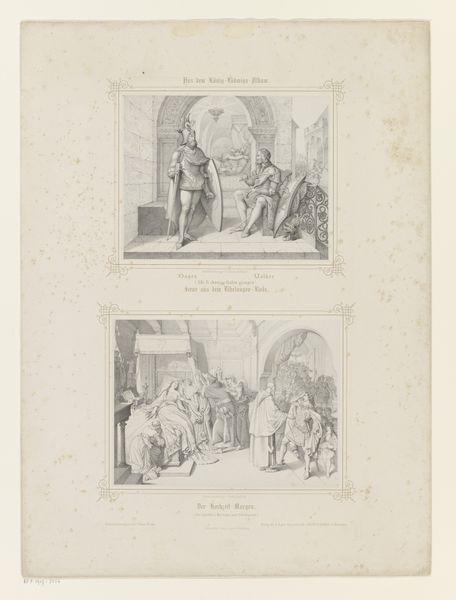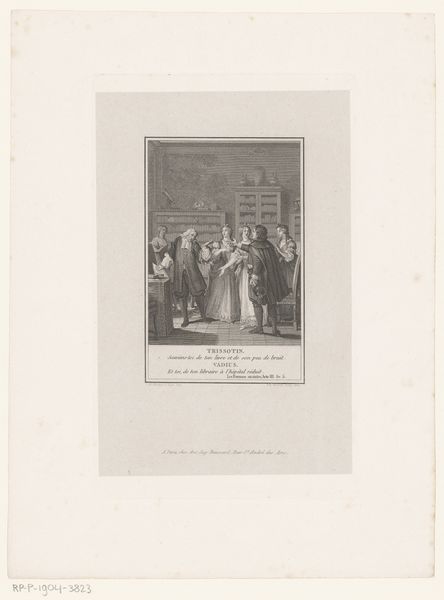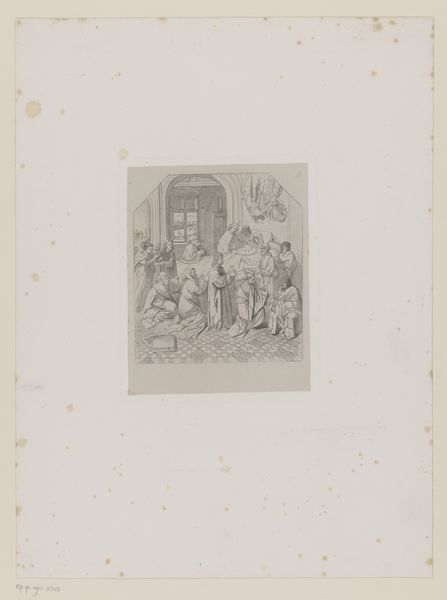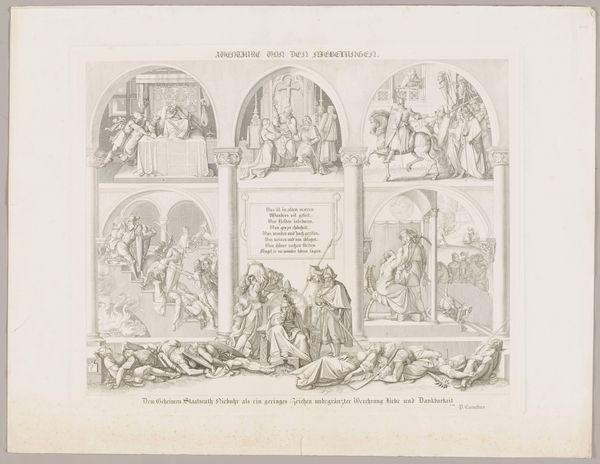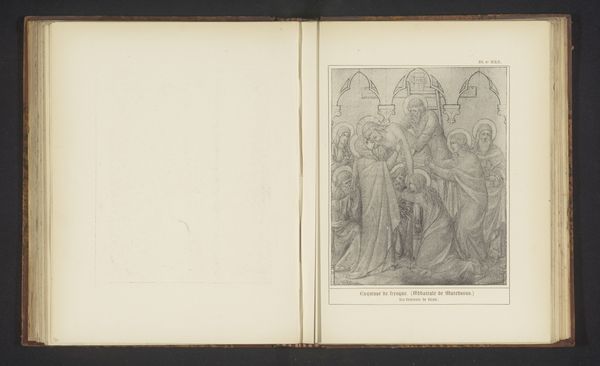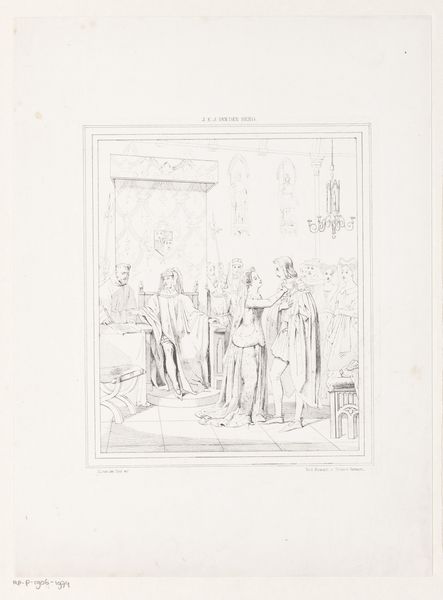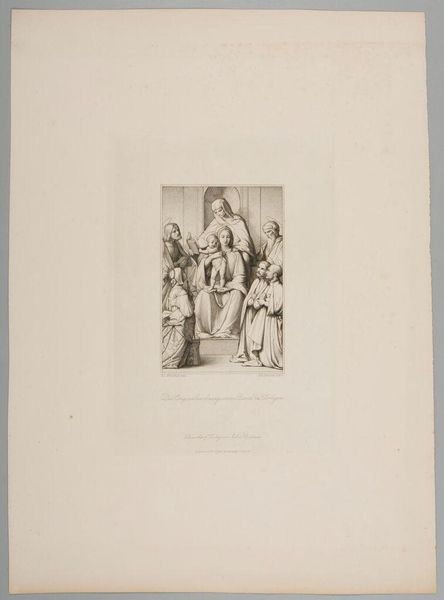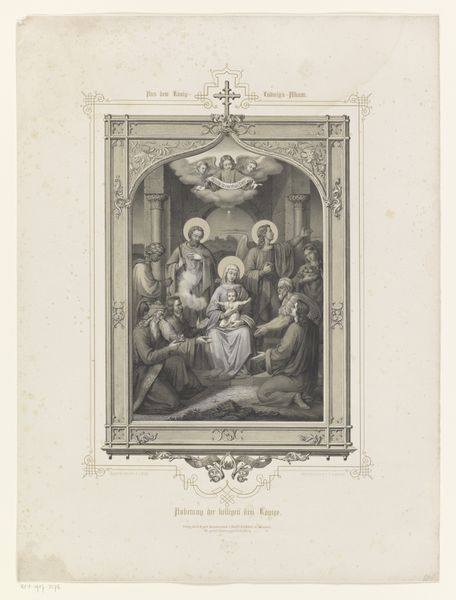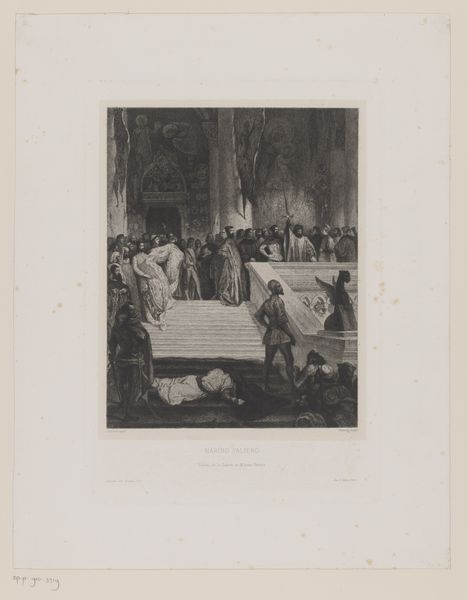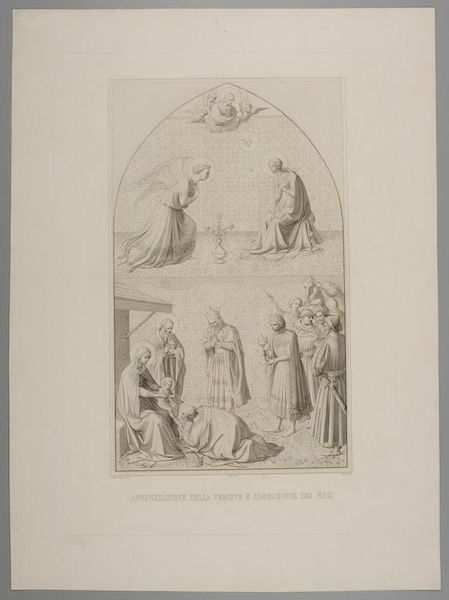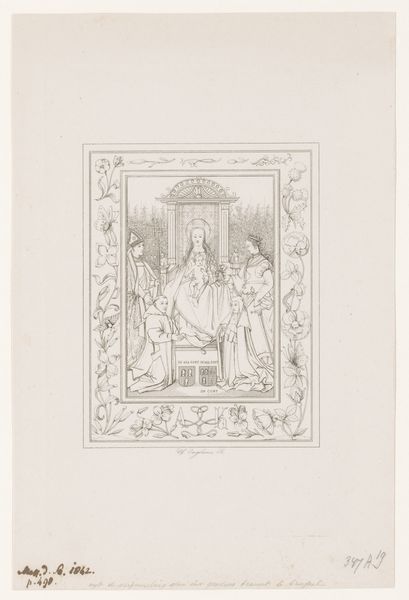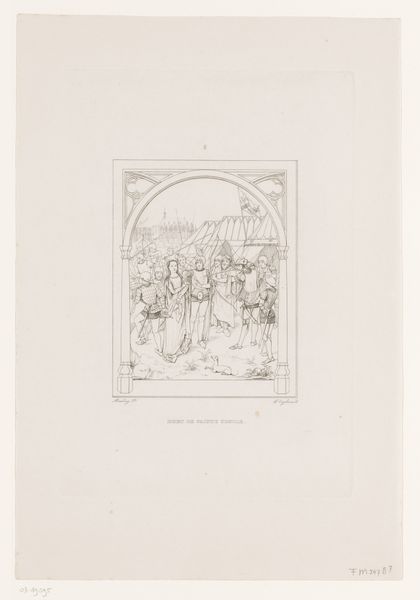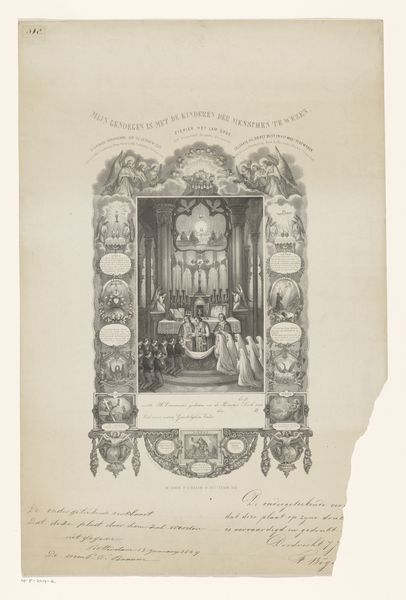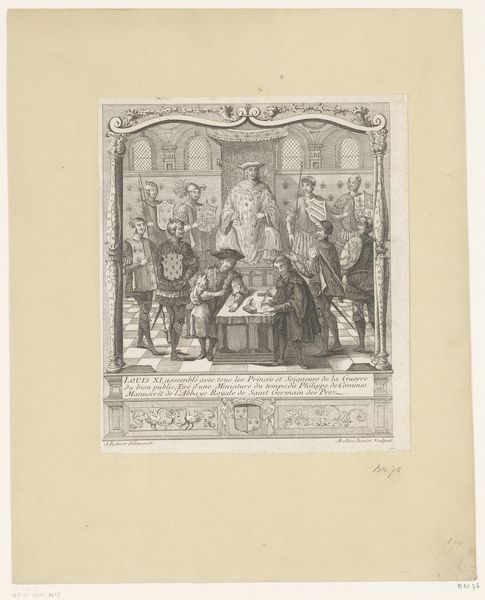
Dimensions: height 595 mm, width 437 mm
Copyright: Rijks Museum: Open Domain
Curator: This engraving, dating from the 1850s, is titled "Voorstelling van een doopsel en van Paulus die Elymas blind maakt," which translates to "Representation of a Baptism and Paul Blinding Elymas." It is attributed to Simon Braun. Editor: My initial impression is one of austere classicism, rendered in meticulous detail. The monochrome palette lends a certain gravity to the scenes depicted. The architectural settings too—so spare, so balanced—underscore this mood. Curator: The composition, neatly divided into two distinct panels, tells a story through imagery steeped in religious narrative. It’s interesting how Braun is engaging with familiar Biblical scenes, in an era grappling with evolving interpretations of faith and the rise of secular thought. Editor: Indeed. Looking closely, the figures are deliberately arranged to guide the eye, with strategic use of light and shadow that enhance their dramatic interactions. There's a deliberate control over the tonal range, achieving surprising depth in the faces especially. Curator: This work speaks volumes about the 19th century's fascination with history and morality. Artists like Braun used these religious subjects to connect with the public on a moral and ethical level, reinforcing accepted social values through historical painting in printed form. Editor: Yes, and observing the careful arrangement of the subjects within each panel—how one’s actions lead the other's—mirrors the composition, so orderly and neatly partitioned. It highlights the structure and visual grammar Braun is purposefully using. Curator: Exactly. The choice to portray these specific scenes also tells us about the didactic role art played then. Baptism as a symbol of spiritual cleansing, and Paul's miracle demonstrating divine power—both powerful messages directed towards the viewer within the broader social framework of the era. Editor: I can see how analyzing this work shows Braun was focused on capturing pivotal moments and their significance for both dramatic, as well as narrative effect. Curator: Precisely. Understanding these images within their historical moment sheds light on the artist’s intended audience and the values he was trying to promote, offering a fascinating insight into a specific historical moment. Editor: Yes, studying the stylistic restraint reveals so much here; from technique to intent, the artist achieves so much with carefully controlled elements.
Comments
No comments
Be the first to comment and join the conversation on the ultimate creative platform.
